Just back from Albany W.A and a symposium on the Walking Together project led by Prof. Stephen Hopper & the Menang, Goreng Merningar Elders. The walking together project went for 4 years and was partially sponsored by Lotterywest to explore traditional noongar land management techniques & cultural collaboration. Priscilla, Jen & I spoke (despite my dread of public speaking) for 10 minutes on the Gomeroi/Euahlayi culture, the Aust. Journal of Botany paper & of course, the TinTs. I finally got to meet Prof. Steve Hopper & his UWA team – Alison, Anna, Suzie & various Indig. aunties & uncles and best of all got to see some Gnaama boorna (Marri wood wells) The old WA water holding trees evoked the same feeling in me as the tree holding trees here – euphoria
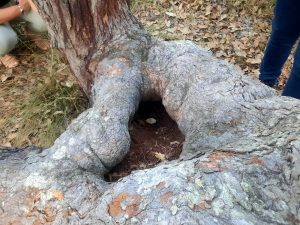
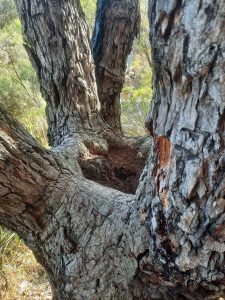
Most of southern WA is in severe drought in the midst of long term rainfall decline. The average temperature has risen by around 1 degree C & average rainfall fallen by about 20% in the lower south west of the state. Some of the small trees in King’s park in Perth have also been killed by fire & drought, but the hundreds of picnicking families on mother’s day were oblivious to this. Farmers are more switched on but looking skywards now for their normally reliable autumn sowing rain. Over-clearing in the past has led to a rising water table bringing salt to the surface in scalds & patches of dead trees. Our Airbnb overlooked the Albany port where 000’s of tonnes of wheat & woodchips are exported day & night. With continuing drought & forest fires these industries will decline and yarning circles, while good for developing relationships & understanding, wont be enough to protect the noongar boodja.
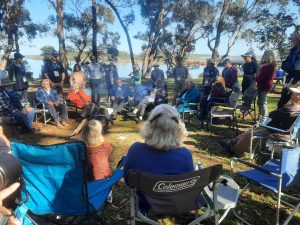
The problem with traditional burning techniques is the same in steep heavily timbered land all over coastal Australia – too little too late. The regrowth & undergrowth is so thick that much of the dry grass that was lit up in the past has been choked out. You can’t put in mechanical firebreaks as the terrain is too steep so when the fire comes thru all the understory regrowth it’s extremely hard to stop. On the way down to Albany from Perth we drove through all the national parks & stopped at the Valley of the Giants near Walpole. The tree top walk among the giant Tingle trees (Eucalyptus jacksonii) is amazing if you have a head for heights. Tingles are limited to this area & some were burnt in a recent deliberately lit fire around Nornalup. Even though Tingle trees like most eucalypts can cope with wildfire around their trunks, intense burns destroy their base, and they eventually topple over. Not to mention the endangered native animals like quokkas and the peat swamps unique to this forest …
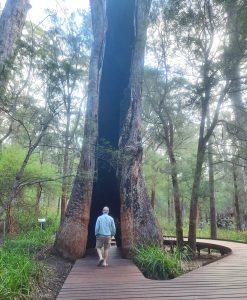
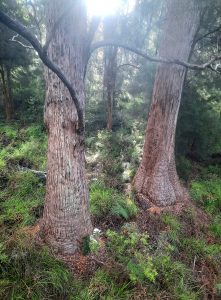
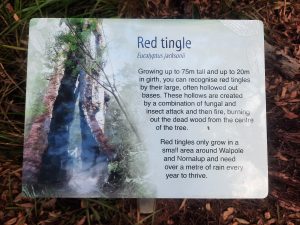
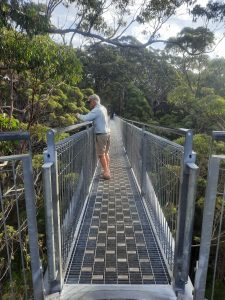
There is a type of casual racism in this country that Americans call the bigotry of low expectations. I didn’t expect to learn as much as I did from the Noongar (and other) Elders in Albany partly because of this mindset. Errol Eades (Goreng), Lynette Knapp (Merningar) & Noel Nannup (Whadjuk) to name just 3, deeply impressed me with the scale of their knowledge. Others gave important and often humorous presentations but that was expected as most Aboriginal aussies are very funny people – watch the ABC’s Black Comedy on Iview if you don’t believe me. I wish we had Prof. Steve Hopper & the UWA team over here – so jealous – but he is coming to see the TinTs in October. I wish the senior academics in conservation biology/ Aboriginal anthropology/ biodiversity-ecology in NSW should grow some nads & step up as well …

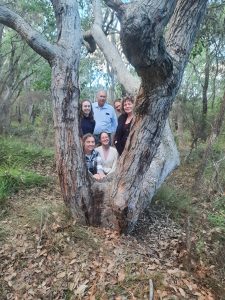
Jen Silcock says
” No institution/University/Government agency will investigate anything cultural without it being led and driven by the local Aboriginal community”
The gatekeepers here in Walgett won’t help me get these TinTs recognised as CMTs and the gatekeepers at eastern Universities wont help either because Im white – so it’s the classic catch 22. If Priscilla Reid-Loynes cant persuade the Elders in town to own the TinTs there is nothing more I can do. Might as well start slicing them up into 2 tone bread boards …
